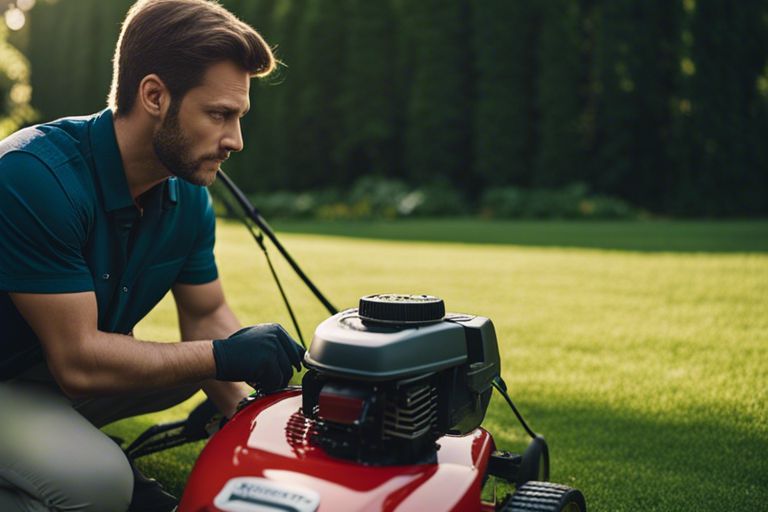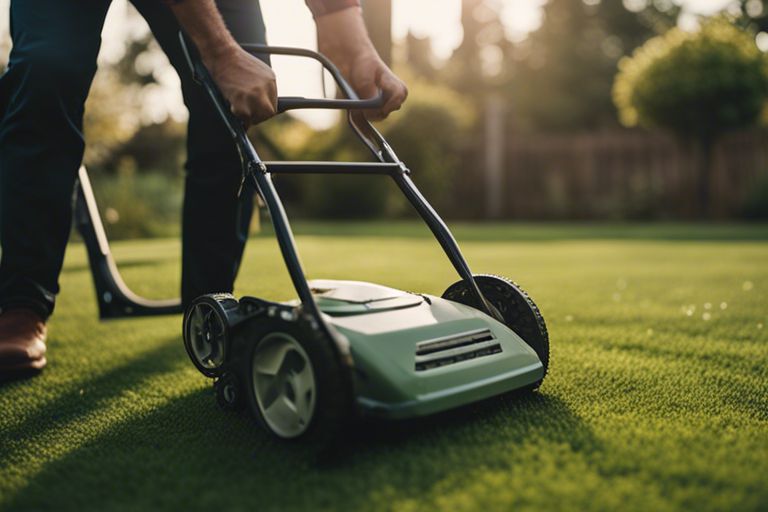Stuck with a lawn mower that has a faulty starter? Don’t worry, there are several tricks and methods you can use to get your equipment up and running without needing to replace the starter right away. By following a few simple steps and utilizing some creative solutions, you can revive your lawn mower and keep your yard looking pristine. In this comprehensive guide, we will walk you through the process of starting a lawn mower with a bad starter effectively and efficiently. Let’s get your lawn mower back in action!
Key Takeaways:
- Use a Manual Starter: If your lawn mower has a pull-start option, you can use this as an alternative to a bad electric starter.
- Check the Spark Plug: A faulty spark plug can also prevent your lawn mower from starting. Make sure it is clean and in good condition.
- Seek Professional Help: If you are unable to start your lawn mower even after trying different methods, it may be best to seek the help of a professional repair service.

Preparatory Steps
Safety First: Preparing to Work on Your Lawn Mower
Assuming you are about to work on a lawn mower with a bad starter, safety should be your top priority. Before starting any repairs, ensure the mower is powered off and the spark plug wire is disconnected to prevent accidental starting. It’s also recommended to work in a well-ventilated area and wear appropriate protective gear such as gloves and safety glasses.
Necessary Tools and Materials
While some repairs may differ depending on the model of your lawn mower, there are basic tools and materials you will need for most tasks. These include a socket wrench set, screwdrivers, pliers, a spark plug wrench, and replacement parts like a new starter motor or ignition switch. Having these on hand will help you tackle the repair efficiently.

Necessary tools and materials are necessary for a successful repair on your lawn mower. Lack of proper tools can make the repair process frustrating and may lead to additional damages. Make sure you have all the necessary items before starting the repair to avoid unnecessary delays.
Troubleshooting the Starter
Visual Inspection for Common Issues
For troubleshooting a bad starter on a lawnmower, start with a visual inspection. Assuming you have checked the spark plug and fuel levels, inspect the starter for any visible damage or loose connections. Look for corroded terminals, frayed wires, or any signs of wear and tear that could be causing the issue.
Testing the Battery and Electrical Connections
The next step in troubleshooting a bad starter is testing the battery and electrical connections. The battery should be fully charged and in good condition to provide sufficient power to the starter. Check for loose or corroded battery terminals and make sure all connections are tight. Use a multimeter to test the battery voltage and ensure it meets the manufacturer’s specifications.
To further test the electrical connections, follow the wiring diagram in the lawnmower’s manual to ensure everything is connected properly. Check for any loose or damaged wires that may be preventing the starter from receiving the proper voltage. If necessary, clean the connections with a wire brush to improve conductivity.
Tips for Starting a Lawn Mower with a Bad Starter
Unlike traditional lawn mowers, starting a mower with a bad starter can be a bit tricky. However, with the right knowledge and techniques, you can still get your mower up and running in no time.
Alternative Starting Methods
Assuming your lawn mower has a bad starter, you can try a few alternative methods to get it started. One common technique is to use a manual recoil starter if your mower is equipped with one. Alternatively, you can try jump-starting the mower using a car battery or a portable power pack. These methods may require some extra effort, but they can help you bypass the faulty starter and get your mower running.
Factors Impacting Your Success
While starting a lawn mower with a bad starter is possible, there are several factors that can impact your success. One key factor is the condition of the rest of the mower’s components, such as the engine and spark plug. If these parts are also worn out or damaged, it may be more difficult to start the mower.
- Ensure the fuel is fresh and the fuel tank is full.
- Check the oil level before attempting to start the mower.
- Inspect the air filter to ensure it is clean and not clogged.
- After trying alternative starting methods, consider seeking professional help if the mower still won’t start.
Knowing these factors can help you assess the overall condition of your lawn mower and determine the best course of action for starting it with a bad starter.

Maintenance Tips to Prevent Future Starter Problems
Once again, taking care of your lawn mower regularly can help prevent future starter problems. Here are some maintenance tips to keep your lawn mower in top condition:
Regular Maintenance Schedule
To ensure your lawn mower continues to run smoothly, it is vital to follow a regular maintenance schedule. This includes checking and replacing the oil, air filter, spark plug, and blade on a regular basis. Make sure to also inspect the fuel system for any leaks or clogs and clean the undercarriage to prevent grass buildup.
Best Practices for Lawn Mower Care
Future starter problems can be avoided by following best practices for lawn mower care. This includes storing your mower in a dry and covered place when not in use, keeping it clean from debris, and sharpening the blades at least once a year. Additionally, it is important to use the correct type of fuel and to never overfill the gas tank.
With these maintenance tips and best practices in mind, you can keep your lawn mower in top condition and prevent future starter problems. By following a regular maintenance schedule and taking good care of your equipment, you can ensure your lawn mower starts smoothly every time.
Summing up
To wrap up, starting a lawn mower with a bad starter can be a challenging task, but it is possible with the right techniques. By following the steps outlined above, such as using alternative starting methods like a rope or jump-starting, and ensuring your mower is well-maintained, you can successfully start your lawn mower even with a faulty starter. Remember to always prioritize safety and consult a professional if needed to avoid any accidents or further damage to your equipment.
FAQ
Q: What are the signs of a bad starter on a lawn mower?
A: Signs of a bad starter on a lawn mower include the engine not cranking or turning over when you try to start it, a grinding noise when attempting to start, or smoke coming from the starter motor.
Q: Can a lawn mower with a bad starter be fixed without replacing the starter?
A: Yes, there are alternative methods to start a lawn mower with a bad starter, such as using a manual pull cord, jump-starting the mower, or replacing the starter solenoid.
Q: How can I start a lawn mower with a bad starter using a manual pull cord?
A: To start a lawn mower with a bad starter using a manual pull cord, locate the cord on the engine, pull it gently and steadily until you feel resistance, then give it a strong, quick pull to start the engine.
Q: What is the process for jump-starting a lawn mower with a bad starter?
A: To jump-start a lawn mower with a bad starter, you will need a car battery or a portable jump starter. Connect the positive (+) jumper cable to the positive terminal on the mower battery and the negative (-) cable to a metal part on the engine. Turn the ignition key to start the mower.
Q: When should I consider replacing the starter on my lawn mower?
A: If alternative methods to start the lawn mower with a bad starter are not working or if the starter continues to show signs of malfunction, it may be time to replace the starter to ensure proper functioning of the mower.
